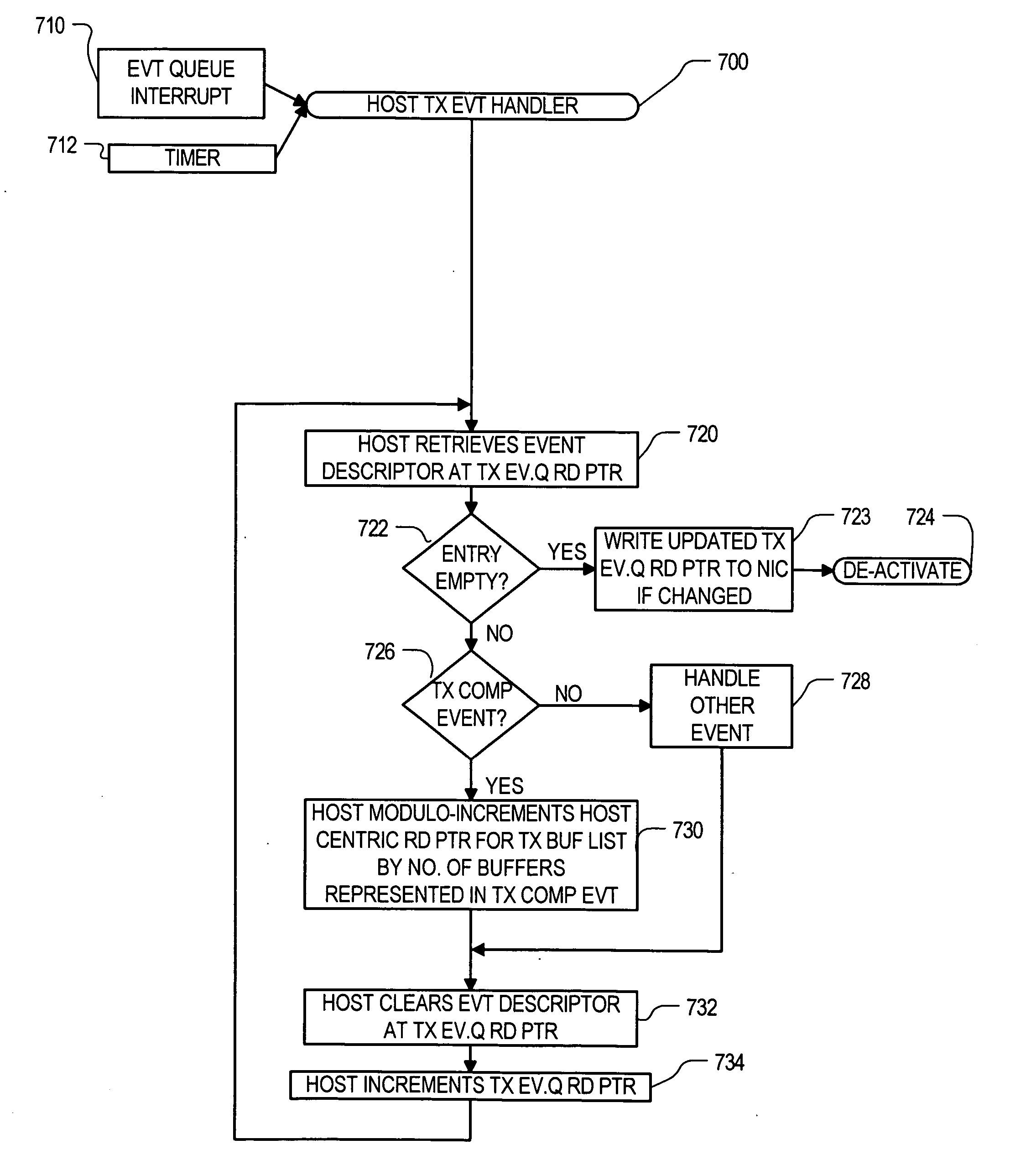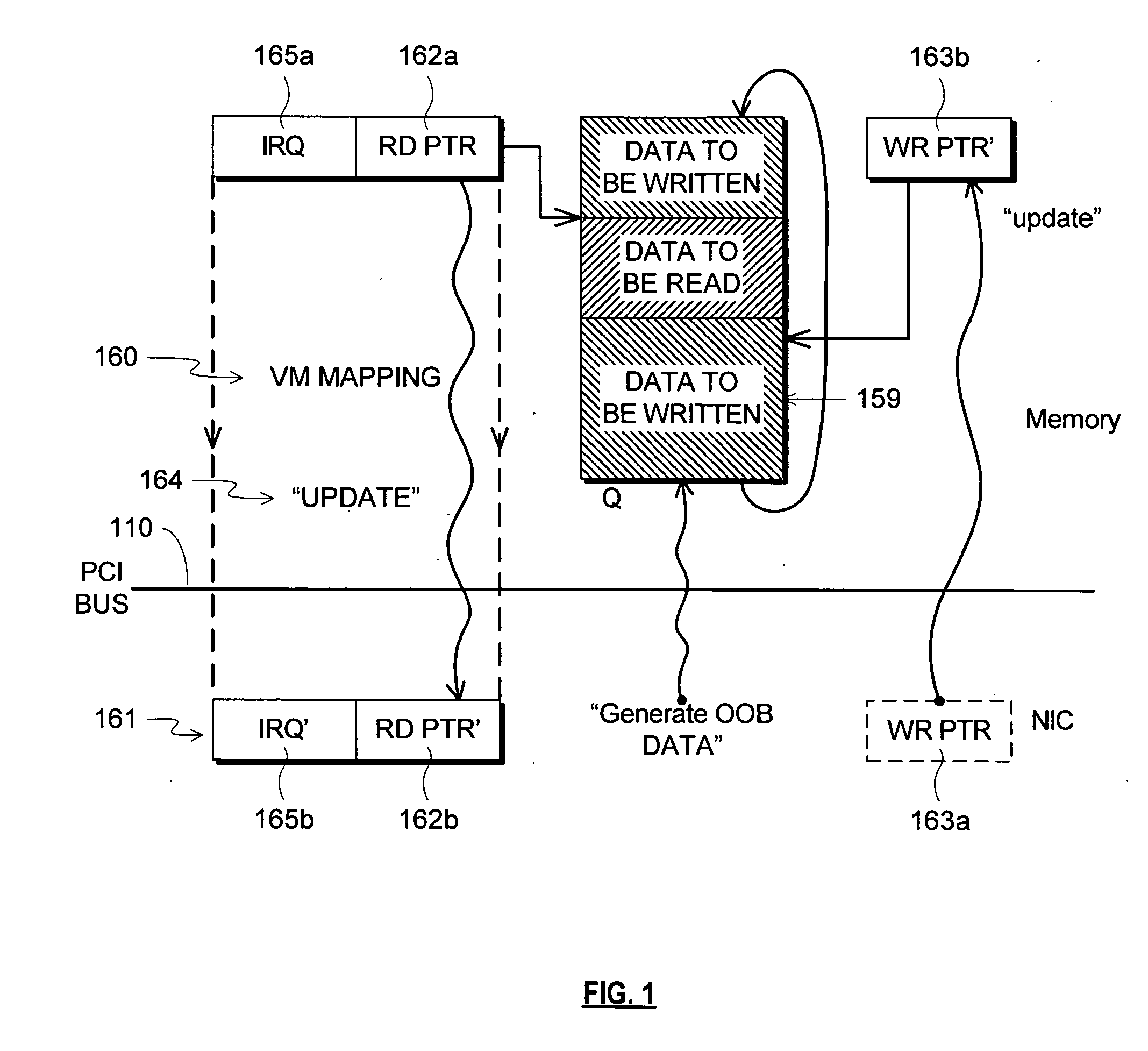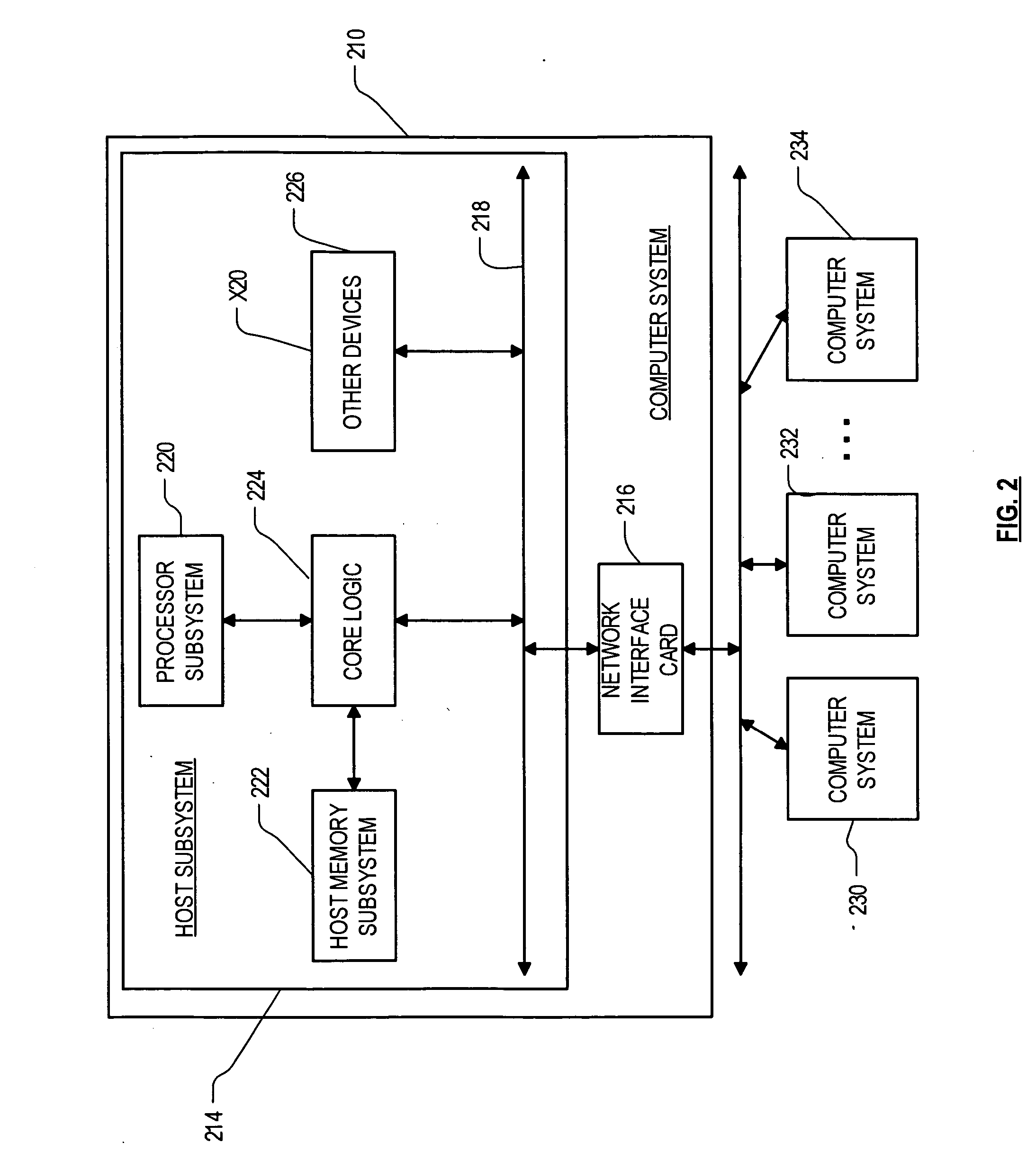Interrupt management for multiple event queues
a technology of interrupt management and queues, applied in multi-programming arrangements, data conversion, instruments, etc., can solve problems such as bus bottlenecks, excessive data movement in transmitting and receiving operations, and significant overhead
- Summary
- Abstract
- Description
- Claims
- Application Information
AI Technical Summary
Benefits of technology
Problems solved by technology
Method used
Image
Examples
embodiment
Shared Event Queue Embodiment
[0161] In the embodiments of FIGS. 3, 4, 13 and 14, a separate event queue is shown for each of the transmit and receive data queues. In a preferred embodiment, however, the host subsystem 214 can designate a single event queue to receive events regarding a number of different data queues. The data queues assigned to a single event queue can be transmit queues, receive queues or both. For example, the host subsystem might be running a program thread that acts as an endpoint for several bundles of TCP connections on the network 212. The thread typically would have a separate transmit queue and a separate receive queue for each connection bundle, but typically would have only one event queue for receiving events related to all such transmit and receive queues. As another example, one program thread might have more than one event queue, or several program threads might share one event queue. All such variations are supported. In addition, in a multiple queu...
PUM
 Login to View More
Login to View More Abstract
Description
Claims
Application Information
 Login to View More
Login to View More - R&D
- Intellectual Property
- Life Sciences
- Materials
- Tech Scout
- Unparalleled Data Quality
- Higher Quality Content
- 60% Fewer Hallucinations
Browse by: Latest US Patents, China's latest patents, Technical Efficacy Thesaurus, Application Domain, Technology Topic, Popular Technical Reports.
© 2025 PatSnap. All rights reserved.Legal|Privacy policy|Modern Slavery Act Transparency Statement|Sitemap|About US| Contact US: help@patsnap.com



